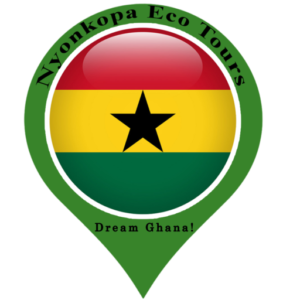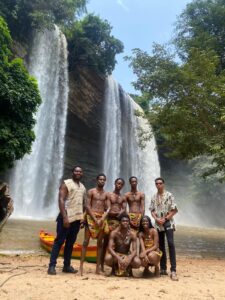 Boti waterfalls is a seasonal waterfalls from the Pawnpawn River that flows from about 30 meter high in the rocky mountains of the Yilo Krobo District near the Huhunya township. Boti waterfalls is very famous for its natural beauty and unique twin flow known as the male and female falls. According to the locals, the male and female falls only merge when they are mating and as a result a rainbow is formed at the site. The name Boti literary means ”head of the rock” as legend says, after its discovery the locals called a renowned catholic priest in the area at the time to see the wonders they have found which the priest upon reaching the site and also seeing the beauty of nature asked the locals where it flowed from and the locals mentioned “Boti” meaning it is flowing from the head of the rock therefore becoming its name. You have to descend about 250 concrete steps from the visitor center to reach the site of the Boti twin waterfalls. Returning from the waterfalls to the visitor center may be a little challenging for some people as it requires a little energy ascending the concrete steps. Boti waterfalls became famous after President Kwame Nkrumah visited the site in the 1960’s and later proposed construction of a visitor center to receive tourists. The best time to visit Boti waterfalls is between the months of May and December.
Boti waterfalls is a seasonal waterfalls from the Pawnpawn River that flows from about 30 meter high in the rocky mountains of the Yilo Krobo District near the Huhunya township. Boti waterfalls is very famous for its natural beauty and unique twin flow known as the male and female falls. According to the locals, the male and female falls only merge when they are mating and as a result a rainbow is formed at the site. The name Boti literary means ”head of the rock” as legend says, after its discovery the locals called a renowned catholic priest in the area at the time to see the wonders they have found which the priest upon reaching the site and also seeing the beauty of nature asked the locals where it flowed from and the locals mentioned “Boti” meaning it is flowing from the head of the rock therefore becoming its name. You have to descend about 250 concrete steps from the visitor center to reach the site of the Boti twin waterfalls. Returning from the waterfalls to the visitor center may be a little challenging for some people as it requires a little energy ascending the concrete steps. Boti waterfalls became famous after President Kwame Nkrumah visited the site in the 1960’s and later proposed construction of a visitor center to receive tourists. The best time to visit Boti waterfalls is between the months of May and December.
Category: Uncategorized
Wli Agumatsa Waterfalls
- Post author By Nyonkopa Admin
- Post date October 21, 2025
- No Comments on Wli Agumatsa Waterfalls
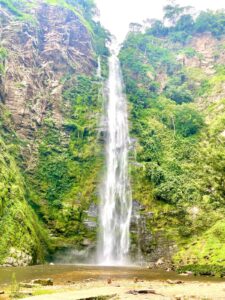 Wli Agumatsa waterfalls is a perennial waterfalls which flows throughout the year either in the dry or rainy season. Famously known as the tallest waterfalls in Ghana and West Africa comes in two different sections. The upper falls and the lower falls. You have to be very adventurous and fit in shape to be able to visit the upper falls since you have to hike longer to the top of the rocky mountain. The upper falls is worth going if you have the energy and preparedness due to the beautiful scenery while on the mountain. The lower falls is the most visited because it is the easiest with about forty minutes walk through the semi deciduous forest crossing about nine foot bridges (some made out of metal and others concrete). The first foot bridge which is closest to the Wli village (Ghana’s border town with Togo) has it river sourcing from Togo. The trail from the visitor center is very smooth and flat but be cautious of army ants on the earth while walking. The Wli waterfalls has dozen of fruits bats hanging on the cliff where the lower falls flows and flies around in circles when they hear heavy noise. Going with a local guide is very helpful because you will get the chance to listen to history of the forest and the waterfalls while walking on the foot trails. You can swim in the pool of water flooded on the ground with guidance from the local guide with you.
Wli Agumatsa waterfalls is a perennial waterfalls which flows throughout the year either in the dry or rainy season. Famously known as the tallest waterfalls in Ghana and West Africa comes in two different sections. The upper falls and the lower falls. You have to be very adventurous and fit in shape to be able to visit the upper falls since you have to hike longer to the top of the rocky mountain. The upper falls is worth going if you have the energy and preparedness due to the beautiful scenery while on the mountain. The lower falls is the most visited because it is the easiest with about forty minutes walk through the semi deciduous forest crossing about nine foot bridges (some made out of metal and others concrete). The first foot bridge which is closest to the Wli village (Ghana’s border town with Togo) has it river sourcing from Togo. The trail from the visitor center is very smooth and flat but be cautious of army ants on the earth while walking. The Wli waterfalls has dozen of fruits bats hanging on the cliff where the lower falls flows and flies around in circles when they hear heavy noise. Going with a local guide is very helpful because you will get the chance to listen to history of the forest and the waterfalls while walking on the foot trails. You can swim in the pool of water flooded on the ground with guidance from the local guide with you.
Ghana & Togo Land Border Crossing at Aflao
- Post author By Nyonkopa Admin
- Post date May 15, 2025
- No Comments on Ghana & Togo Land Border Crossing at Aflao
A person from any of the ECOWAS countries do not need a visa to cross any land borders in the ECOWAS sub region. You may only be asked to show a proof of a yellow fever vaccination especially if you request for a visa stamp in your passport booklet at the border.
Contrary, a non ECOWAS citizen requires a visa to enter into any of the countries within the sub region. This is no exception to entering Lome, Togo from Ghana through Aflao. You need to apply for an e-visa for Togo through their online e-visa application portal via the link below.
Coming from Ghana through Aflao to Lome, Togo.
At the Ghana side of the border, bring out your passport and yellow fever vaccination card to show at the Ghana immigration office (light and deep green colored) on your left hand side after the car park for exit booking and stamp duties.
Once finished at the Ghana side, walk across the street to the right side to the Togolese post of the border for your e-visa in your passport to be checked. You will be given a sheet of paper to detail your personal information and purpose of visiting Togo. You may sometimes meet a lot of queue during the Togo e-visa scrutiny so have some patience until you are done then you leave. You are not require to pay any money during the passport review even though some of the Togolese officers may ask you for money (dash or tip) sometimes. If you are finished filling out the white paper form, add your passport and give them back to the officer behind the counter who initially attended to you. If the office sees that all is well with your information your passport booklet will be given a Togolese entry stamp and as well welcome you to Togo. And do not forget to take back your passport and yellow fever vaccination card before leaving the counter.
Coming from Lome, Togo to Ghana through Aflao.
Walk or drive close to the main border post and at the right hand side of the border gate you will see Togo exit office or check point. Bring out your passport for exit stamp. Then walk pass the gate to the Ghana immigration office for Ghana entry stamp in your passport.
Note: This experience may vary from individual to individual so make sure you are well prepared before going. Also, do not allow any random stranger come in and say he or she will help you. They may rip you off so be cautious.
Ghana and Togo land border crossing at Aflao is one of the busiest among the various land border crossing between Ghana and its neighboring countries. If you are a citizen from any of the ECOWAS nations you do not need a visa to enter however going with a private vehicle means you will have to go through some hectic formalities.
Coming from Ghana.
You will have to drive straight towards the border post and park at the left hand side where all the big trucks are parked. Bring out your official car and driver’s documents to be booked at the police office. Walk infront and pass the big building to the police office beside the big building for your white sheet/paper (as they call it). Then come back to the big building to show your white sheet/paper and documents to book for an exit from Aflao, Ghana. Walk to the customs office on the left hand side in between the Ghana immigration office and Togo police check point to present your driver and vehicle documents for checkout. Now, walk back and drive your car through the Ghana exit to the Togo post of the border on your right hand side. Present your car and driver documents for Lome entry bookings at the Togo police post right after the Togo visa check office. Togo entry booking is (4,000 CFA Franc as of Jan 2025). But if your car is first time entering Lome you will pay (30,000 CFA Franc as of Jan 2025) so that your car’s document will have a life time Togo entry stamp. Then drive a little further to register for laissez-passer at the exit of the big brown building with ”Bienvenue Au Togo” sign (6,000 CFA Franc as of Jan 2025). But before the laissez-passer post there are some police officers (who claim to come from Narcotics) who may stop you to check your car for illicit drugs and related substance. When all is finished, you are now welcome to Lome, capital of Togo.
Coming from Lome:
Park your car and present the laissez-passer to the police for check out from Lome in the brown storey building on the right hand side with ”Bon Voyage” sign. Then walk or drive a little further to the border check point of the Togolese and show your car documents to book for exit at the police post before the Togo visa check post (4,000 CFA Franc as of Jan 2025). Then take a white paper/sheet to show as cleared from Lome.
Note: Do not pay attention to any person who claim to be helping you to do all these formalities. They will rather rip off you especially if you are a first timer and don’t either speak French or Ewe at the border.
Beauty of the Ghanaian Kente Cloth
- Post author By admin
- Post date May 5, 2025
- No Comments on Beauty of the Ghanaian Kente Cloth
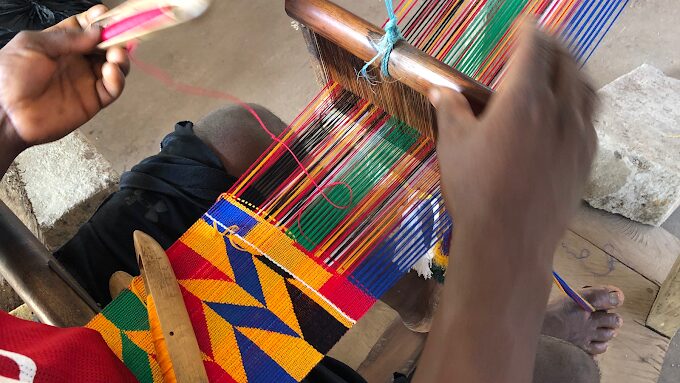
Kente has been adored for decades because of its cultural value and traditional importance in Ghana. Legends says, one hunter went hunting and found the spider beautifully weaving a web to live in. The hunter then replicated the art of weaving from the spider using cotton when he came back to his village and gradually the art of Kente weaving became very famous. In Ghana, Kente weaving are a very popular craft among the Ewe’s of the Volta Region especially the people of Tafi Abuife and Agotime Kpetoe as well as the people of Bonwire and Adanwomase of the Asante descent. The beautiful Kente cloth is weaved into stripes of several pieces in the traditional Kente loom before they are joined together to make a whole cloth to fit. Kente cloth have several uses ranging from sewing them into beautiful garments for functions such as chief durbars, engagements, naming ceremonies, religious ceremonies, funerals and sometimes for the decorations of homes and car interiors. Kente cloth comes in different colors, texture, weight and pattern. Selecting a Kente cloth depends on ones choice and uses for them because each Kente design tells a story or has a meaning attached. Get one for yourself and feel the uniqueness of the Ghanaian pride.
Fertility Doll in Ghanaian Culture
- Post author By admin
- Post date May 5, 2025
- No Comments on Fertility Doll in Ghanaian Culture
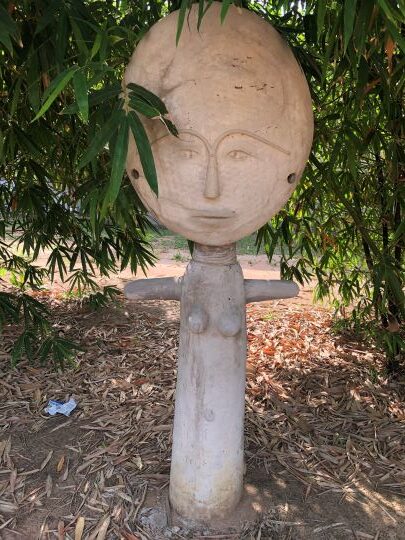
In the Ghanaian traditional system, a fertility doll (Akua’ba as it is called in the Akan Twi language) is given to an infertile woman to care for, as if it is an actual baby until she becomes pregnant and conceives her own child. The mother then gives the fertility doll to her child as a playing instrument while he or she is a toddler. The child also plays with it until he or she becomes a teenager. This has been one of the common traditional cultural practices among the Ghanaian people from ancient to present day. Currently, a Ghanaian artist who is famous for making sculpture heads of supposed living and dead African ancestors took the concept of fertility doll of the Akan system by molding male and female fertility dolls to symbolize a new birth and fresh beginning for Africans in relations to the infamous transatlantic slave trade that befell their forefathers especially those in diaspora.
Drawing a fishing net from the ocean.
- Post author By Nyonkopa Admin
- Post date February 2, 2024
- No Comments on Drawing a fishing net from the ocean.
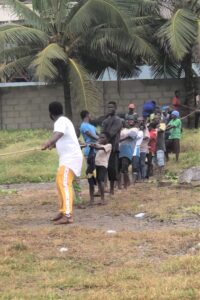
It takes a lot of energy, commitment and time to pull out a net full of fish caught during a fish hunt on the high sea’s by local fisherfolk’s in Ghana. This is one of the indigenous occupations that involves a lot of dedicated team work. A team of highly skilled people( mostly men) goes fishing on the high sea at night and return at dawn with a high or low catch depending on the season of the year. They use their traditional fishing boats to bring their catch to a point where they call everyone one of the village to assist pull the catch in a net with a long rope to the shore where women of the village later buy them to sell either smoked or fresh at a nearby market. According to these local fisherfolk’s, it sometimes takes almost half a day to be able to draw the net full of fish caught from a point in the sea to the shore. I joined one of their pulls one morning to experience how it feels and it was not easy at all but i love their communal team work and songs.
Experience Ghana Like A Local!
- Post author By admin
- Post date September 20, 2022
- No Comments on Experience Ghana Like A Local!
Nyonkopa (Good friend) Eco Tours is happy to make your Ghana visit a memorable one.
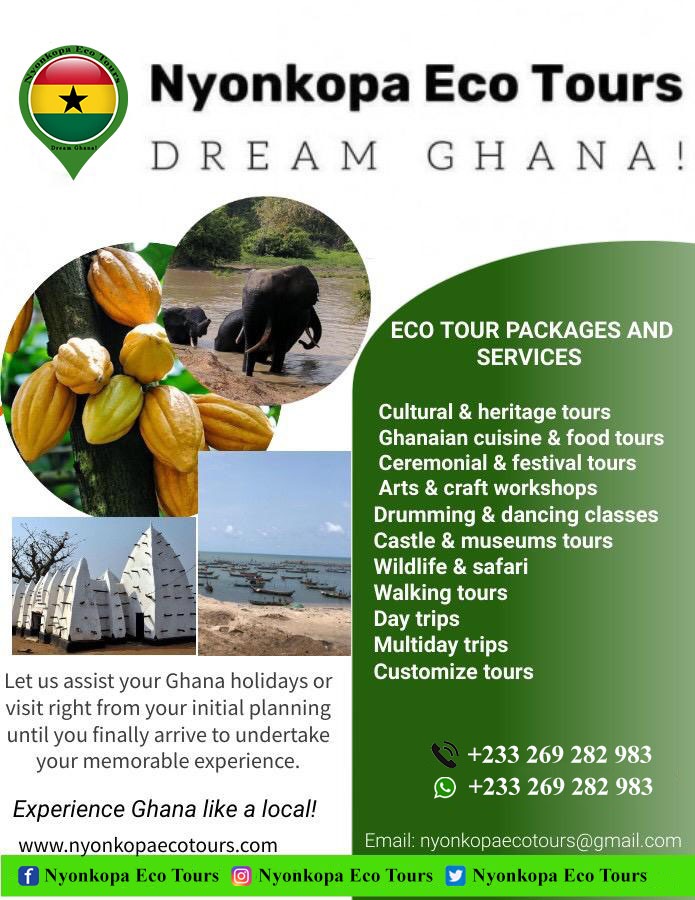
Explore Ghana.
- Post author By admin
- Post date June 23, 2022
- No Comments on Explore Ghana.
We assist all class of visitors to have the best of Ghana experience of their lifetime.
Harmattan in Ghana
- Post author By admin
- Post date June 23, 2022
- No Comments on Harmattan in Ghana
Harmattan (dry season) also known as northeast trade wind is a climatic condition that Ghana among other West African countries experience. It is usually cold, windy with dust and humid. In Ghana, Harmattan starts from late November to mid March every year. The effect of Harmattan on people includes skin dryness, dry and itchy throat, cough and cold related ailments. During this period a lot of trees shed off their leaves and most water bodies also dries up. Animals in the ecosystem have to travel longer distances to search for food and water. However, this season is considered to be best for game viewing at any of Ghana’s wildlife reserves especially Mole National Park.
